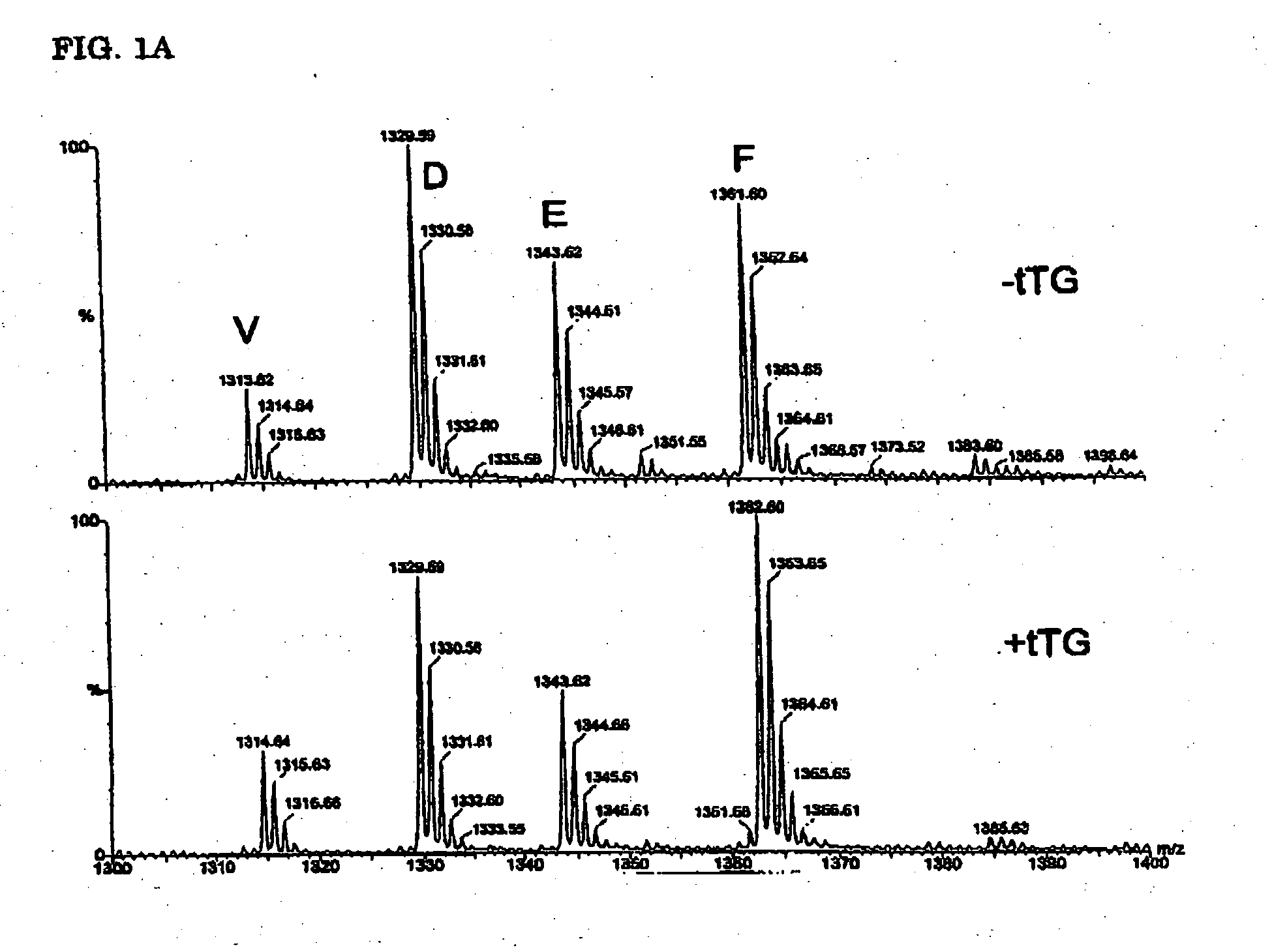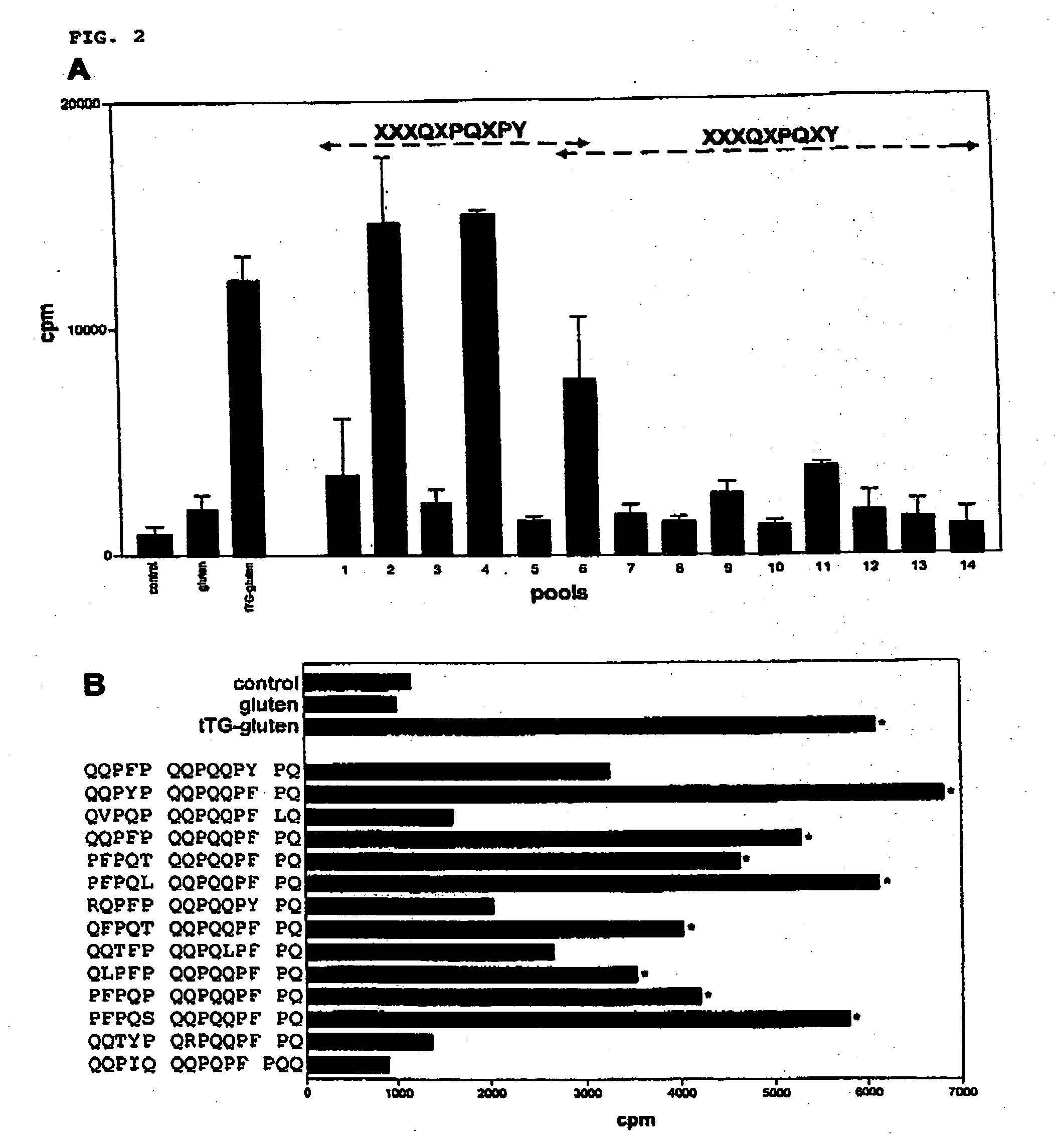Novel epitopes for celiac disease and autoimmune diseases, methods for detecting those and novel non-antigenic food compounds
a technology for autoimmune diseases and new epitopes, applied in the field of molecular biology and immunology, can solve the problem of not being clear in which way these neo-epitopes can be formed
- Summary
- Abstract
- Description
- Claims
- Application Information
AI Technical Summary
Benefits of technology
Problems solved by technology
Method used
Image
Examples
Embodiment Construction
[0033] In celiac disease both T-cells reactive with (epitopes derived from) gluten and antibodies reactive with the enzyme tTG (tissue transglutaminase) have been found. It is hypothesized that the epitopes from gluten are the causative factor of the disease. The antibodies specific for the endogenous tTG can be explained because the enzyme crosslinks with gluten proteins or parts of those, which complex then will be recognized by a B-cell expressing tTG specific antibodies on its cell surface. The complex, including the gluten will then be processed by the B-cell to present the antigenic determinants to gluten specific T-cells, thereby delivering specific T-cell help, resulting in the secretion of tTG-specific antibodies.
[0034] We have now determined the patterns of deamidation in gluten, and find that this is highly dependent on the spacing between the glutamine and proline residues. This knowledge can be used to predict novel T cell stimulatory gluten peptides. Moreover, our res...
PUM
| Property | Measurement | Unit |
|---|---|---|
| mass | aaaaa | aaaaa |
| mass | aaaaa | aaaaa |
| mass | aaaaa | aaaaa |
Abstract
Description
Claims
Application Information
 Login to View More
Login to View More - R&D
- Intellectual Property
- Life Sciences
- Materials
- Tech Scout
- Unparalleled Data Quality
- Higher Quality Content
- 60% Fewer Hallucinations
Browse by: Latest US Patents, China's latest patents, Technical Efficacy Thesaurus, Application Domain, Technology Topic, Popular Technical Reports.
© 2025 PatSnap. All rights reserved.Legal|Privacy policy|Modern Slavery Act Transparency Statement|Sitemap|About US| Contact US: help@patsnap.com



